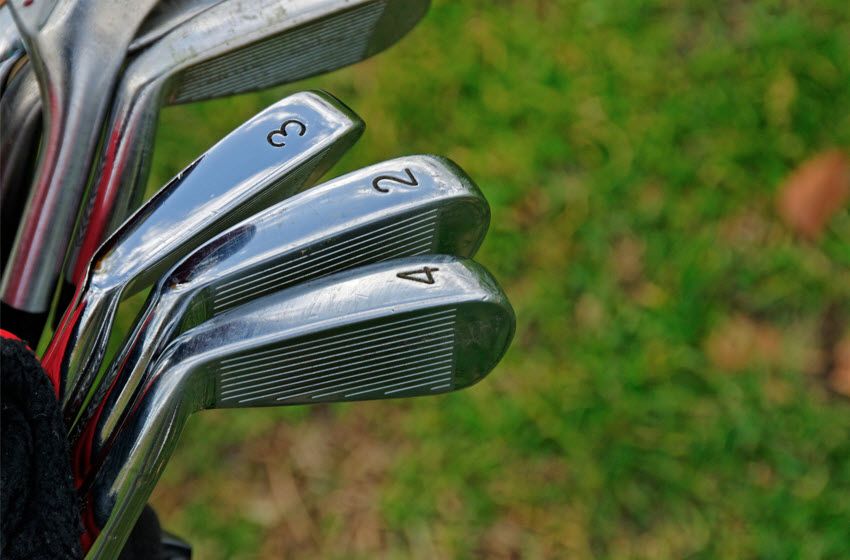How to Chip In Golf: Chipping is an essential skill for any avid golfer, as it allows them to score even when the ball does not land on the green. This comprehensive guide introduces the basics of chipping, from basic technique, developing a feel and setting a target, to Paul Runyan-inspired chipping and practice drills.
It addresses the fundamental principles of a successful chip shot, such as posture and configuration, contact with the ball, distance control, and the desired ball-turf interaction. Whether you are a novice or an experienced player, this guide and video will help you perfect your chipping game and ensure accuracy in all your shots.
Short Summary
- Chipping in golf involves correct posture, stance, setup, and developing a feel for the motion.
- Distance control can be calibrated by practicing with different clubs, setting up targets to aim at, and adjusting the length of the chipping swing.
- Paul Runyan-inspired chipping and practice drills can help refine the short game and improve control over the ball.
How To Chip In Golf: The Setup

A great rule of thumb to keep in mind is that if there are no slopes, bunkers, or mounds to go over, then a chip shot is great to get the ball rolling.
However, if the ball is only just a little off the green, then a putter will be a safer option.
The Basics of Chipping

Chipping is a technique in golf that involves lifting the ball into the air and then letting it roll with a long trajectory on the green. It is an essential skill for all golfers wishing to improve their game, as it enables them to land the ball a yard or so on the green, where the roll is more predictable than in the rough.
Understanding the fundamentals of chipping is the first step in improving this skill. The fundamentals of chipping involve adopting the correct posture, stance and setup. Establishing proper posture is the initial step to improving one’s chipping technique. Additionally, pay attention to brushing the grass beneath the golf ball, as you complete your swing, allowing the loft of the golf club to take over the task.
When setting up your stance, the body should be oriented slightly ahead of the ball with the sternum aligned in parallel to the ball’s position, while the ball should be placed at the center of the stance or slightly behind. It is also important to grip the club firmly and keep the arms as straight as possible when chipping. A few minor adjustments can be made to posture and configuration for chipping.
The essential element of an effective chipping technique is maintaining a steady arm and hand position while executing a controlled stroke with the aid of the chest and shoulders. Furthermore, golfers should avoid attempting to lift the ball into the air or strike the ball with excessive force, as well as attempting to manipulate the ball with an overly aggressive motion.
To set up for a chip shot, do the following:
- Narrow your stance and try to put most, not all, of your weight on your left leg (if you’re right-handed). The shaft of the club should be leaning forward just a little.
- Grip down on the club and lean a little forward. Your sternum should be slightly ahead of the ball.
- Grip with your right hand first and then keep your arm straight.
- Your right shoulder should feel a little higher than your left shoulder.

Reverse these mechanics accordingly if you’re left-handed.
The Swing: Basic Chipping Technique
When making your backswing, fold the right arm and hinge the left wrist.
Not that the wrist should break only a little. That moves the clubhead upward so you can hit down slightly at impact. Do not let any of the shoulders change alignment throughout your swing. Ideally, the weight should also be maintained primarily on your left leg.
You don’t need too much force when chipping the golf ball.
On the downswing, let your right arm unfold while keeping the elbow tucked close to your side. With the wrist bending back again, you should get a nice crip shot of the ball like this.
Keep everything moving forward through the shot and allow your eyes to follow the ball. Don’t stop your head at impact or keep it down too long since you’ll end up just flicking at the ball, resulting in inconsistent striking.
What you want to see is a shot that’s not too high and rolls a little bit upon landing, hopefully on the spot you intended for it.
This shot is relatively easy to explain but hard to put into practice. It does tend to feel unnatural to do but with enough practice, you’ll definitely get the hang of it.
Choosing The Right Club

Though many people might think that a wedge is an ideal club for chipping, don’t reach for it unless you want to chip at a downsloping angle on the green.
To practice chipping, an iron of 9 or 8 should be sufficient. Perhaps, even lower than that. When you have mastered this then you can confidently chip using all the irons.
If you feel like you absolutely have to use a wedge, then a 52- to 56-degree wedge should prove good enough.
Paul Runyan-Inspired Chipping
Paul Runyan was a celebrated golfer renowned for his exceptional short game. His chipping technique involved getting the ball onto the green and rolling it with maximum speed.
The Paul Runyan-inspired chipping technique is a one-lever wrist action that is more closely aligned with the mechanics of putting. This technique is advantageous as it eliminates any wrist action that could potentially complicate the putting stroke itself. Utilizing the Paul Runyan-inspired chipping technique is reliable and necessitates less force. It is also beneficial for low chips and does not involve any wrist action that could complicate the stroke.
The Paul Runyan-inspired chipping technique is distinct from the traditional method of chipping with wedges in that it involves a one-lever wrist action more akin to putting. This technique is advantageous as it does not involve any wrist action that could potentially complicate the stroke. Additionally, Paul Runyan’s technique emphasizes getting the ball on the green and rolling it with maximum speed, which is a great way for most golfers to chip in golf.
Common Mistakes with Chipping
Here are two of the most common mistakes novices make when trying to chip:
Flicking
You see this mistake often with many golfers trying to chip–they’re flicking at the ball to help it up rather than relying on a good strike.
Keep in mind that clubs have around 60˚ loft or more, so there really isn’t any need to try to lift it up into the air. In fact, this is a problem not just with chipping but in taking shots in general. This only holds it back from reaching the distance it could have otherwise reached had you trusted your strike.
One remedy against this is to push an alignment stick down the shaft of the club. This will sit under your arm at the address. By using this stick, whenever you come down on the ball and an impact is made, the stick will hit your side to let you know that the clubhead is already overtaking you (flicking).
With enough practice, you hopefully won’t need this before too long. Concentrate on making consistently good shots and letting that show for themselves.
Toe-down shot
One of the main causes of a poor chipping shot is where the heel of the club is digging in on impact, thus causing heavier contact than needed for a chip shot.
This tends to happen frequently during tricky terrain or a muddy lie. To remedy this, address the ball with the toe of the club down more and the heel a little off the ground.
Though this won’t cause spin and is certainly not something that should be done in all scenarios, it’s a great tip to use if the circumstances call for it. It’ll guarantee contact and eliminate the embarrassment you’ll endure for making a duffed chip.
Use your best judgment as a player when deciding to use this tip. If you use it when making a chip shot on a perfectly good lie, then you’re risking spin, roll, and distance over certainty.
Practice Drills
Rotating the lower body is essential for generating power and maintaining equilibrium during the swing, thus honing the chipping technique is a must. To assist in this process, the Swing Align XL cuffs can be affixed around the thighs to facilitate the correct rotation of the lower body. This device allows golfers to rehearse the swing with the cuffs, cultivating muscle memory and augmenting their chipping technique.
An effective practice drill for chipping would be to take five golf balls and stand 10 yards away from a hole on a chipping green. Select a 9-iron for chip shots. See how many of these can land within one club length (3 points) and two club lengths (1 point). Measure the results. Bring the measured distance to 15 yards. Start with the exercise again.
Developing proficiency in pitching is also an important component of the short game, enabling golfers to successfully navigate challenging lies near the green. Through regular practice of pitching techniques, golfers can refine their control of distance and accuracy on the course.
Bottom Line…
The road to a refined chipping game begins with mastering the basics such as posture, stance, and setup. This thorough foundation is compounded by developing one’s feel for the shot, calibrating one’s distance control, and aiming toward a target. Wedges enable golfers to chip with more finesse, while utilizing the Paul Runyan-inspired technique further enables greater accuracy at low chip shots. Finally, it is important to practice drills in order to hone precision and improve performance on the course.
In conclusion, an effective chipping strategy is key to becoming a successful golfer. Comprehending the basics of chipping setup and then refining this knowledge by perfecting one’s feel and implementing tips and techniques can help golfers chip like a pro. With consistent practice, golfers can easily learn the mechanics of chipping and soon begin to see results on the course.
And that was all you needed to know about how to chip in golf. Though not easy by any stretch, nothing in golf really is. Being able to do it properly is a hallmark for a golfer who’s put in the time and patience to master the sport and all its tricks.
So, like with anything, practice makes perfect. Follow these steps, chips frequently by yourself, and play the game as often as possible to develop your decision-making skills. If you do this, there’s no saying how good you’re going to be!

